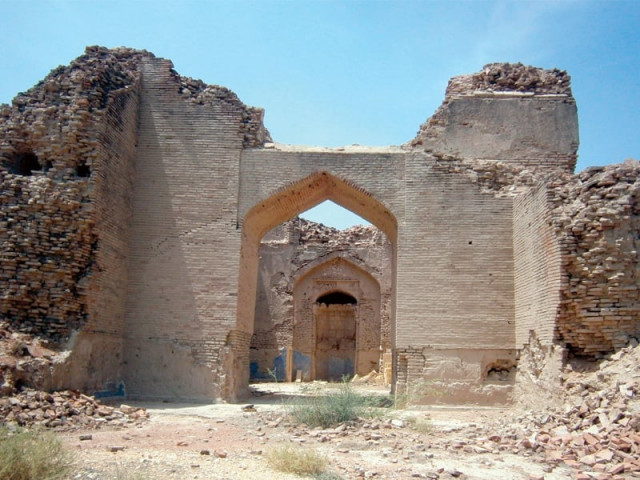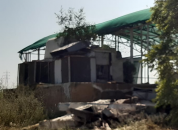Kalan Kot Fort struggles with ghosts of the past and squatters of the present
Historical site falls prey to land grabbers as they set up camp.

Located in Thatta district, Kalan Kot fort stood tall during many battles and dynasties; some historians suggest that it could be easily date to the 14th century when the Soomro Dynasty, the first Ameers of Sindh, were in power.
Now, the fort is falling into the hands of land grabbers and squatters. People who live close to the site say that in the last couple of days they noticed big machines and loud tractors trying to drain the lake nearby. They wished to remain anonymous and did not want to point fingers. “Those people have the support of a ruling party,” said a man who did not want to be named.
Historical background
According to archaeologist and historian Prof. Badar Abro, the fort has been there for over 350 years but no one knows when it was built or who made it.
He says that among historians such as Mir Ali Shaikh Kane, Mirza Kaleech Beg and Pir Hashamuddin Shah Rashdi, there was a disagreement about the fort’s name and its meaning.
Some call it Kala Kot or Kalyan Kot, Tughlaqabad or Tughralabad. Abro suggests that there is a possibility the name of the fort kept changing depending on who was on the throne. However, there is a general consensus that the fort was in use up until Mughal Emperor Aurangzeb ruled India. No one knows why or how the fort was destroyed, it seems to have grown worse year by year.
“The tourists who visit the graveyard often want to know where the palaces are, who built the forts and such beautiful graves, and how they survived despite the invaders and changing times,” said Abro. He regretted that the city of Thatta did not have any answers to these questions.
The issue
The fort’s lake, which is spread over 150 acres, is the real bone of contention. Land grabbers have started draining the water in the lake, and so far have emptied nearly 30 acres. To make matters worse, they have set up camp around the fort. The lake, which basically functioned as a moat, was built to protect the fort and its residents from invaders. Historically, water from River Indus used to flow into the lake.
“I have never seen the lake dry,” said Rasool Bux Dars, a writer and historian who lives in Thatta, while talking to The Express Tribune. “The destruction and illegal occupation of archaeological sites is happening all over Sindh because the people don’t acknowledge the significance of heritage.”
According to Abro, this is the second time squatters were encroaching the fort. He claimed that in 2009, the district government had to evict people who had started living near it.
He did some brief research and wrote to the culture department asking them to protect the site and start an excavation project but nothing happened.
The archaeology department’s director, Qasim Ali Qasim, was not sure if the fort was a listed heritage site. “The culture secretary [Abdul Aziz Uqaili] has asked me to double check if the fort is an archaeological site or not,” he said.
However, the deputy commissioner of Thatta, Dr Hafeez Siyal denied that any land grabbing was going on. “I sent the police there, but they found nothing.”
Zaheer Shah, the curator of the Makli graveyard in Thatta, did not acknowledge the fort as an archaeological site. He claimed that they were not sure but were examining the fort after news of land grabbing went viral. Abro claims that a sign board of the archaeology department, when it was a subject of the federal government, was affixed at the site 10 years ago.
Published in The Express Tribune, September 10th, 2012.



















COMMENTS
Comments are moderated and generally will be posted if they are on-topic and not abusive.
For more information, please see our Comments FAQ